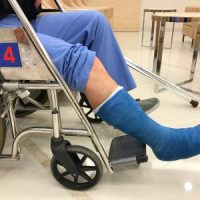What Are the Most Common Injuries Sustained by Nursing Home Residents?

Nursing homes are meant to be a safe haven for elderly individuals who need extra care and attention. However, the unfortunate reality is that nursing home residents are often subject to a number of injuries, some more common than others.
This can be devastating for both the residents and their family members. If your loved one was injured during their stay in a nursing home, consider speaking with a lawyer at Emerald Law Group. Our Seattle nursing home abuse lawyers can help you determine what caused your loved one’s injury and whether you can hold anyone accountable for the harm caused.
Common Injuries in Nursing Homes
Nursing home residents can sustain all kinds of injuries ranging from minor to severe to life-threatening. Some of the most common injuries in nursing homes are:
1. Bed and Pressure Sores
Bed and pressure sores are among the most common injuries sustained by nursing home residents. According to Johns Hopkins University, bedsores can be related to the quality of care the elderly person receives.
These sores are caused due to the prolonged sitting or lying down of the resident without a change in position. They can lead to infections, and in serious cases, even death. The best way to prevent bed and pressure sores is to ensure that the resident’s position is frequently changed and that they are given proper nourishment and hydration.
2. Restraint Injuries
Restraints are sometimes used in nursing homes to keep residents from wandering or to prevent them from harming themselves. However, the misuse of restraints can result in serious injuries, such as skin abrasions, cuts, bruises, and even fractures. Restraints should only be used when necessary and in accordance with the resident’s care plan.
3. Infections
Infections are a prevalent concern in nursing homes, and residents are at a higher risk of developing them due to decreased immunity. Common infections such as the flu, pneumonia, and urinary tract infections can be easily prevented with proper hygiene practices such as frequent hand washing, surface disinfection, and proper disposal of medical waste.
4. Broken Bones
Broken bones are often the result of falls, which can be caused by various factors such as slippery floors, cluttered walkways, or improper footwear. To prevent falls, proper precautions such as non-slip flooring, adequate lighting, and proper mobility aids should be implemented. Additionally, residents should be screened for fall risk and given individualized care plans to address their specific needs.
5. Head Injuries
Head injuries can result from falls, physical abuse, or medication errors. These injuries can lead to serious complications such as bleeding in the brain or skull fractures. Nursing home staff should be vigilant in monitoring residents for signs of head injuries such as dizziness, confusion, and nausea.
When Do Residents’ Injuries Constitute Nursing Home Abuse?
It is essential to understand when your loved one’s injuries may constitute nursing home abuse. Abuse can include physical, emotional, and financial mistreatment, neglect, and exploitation. Concerned loved ones should report any suspicious behavior to the nursing home administration and appropriate authorities and hire a lawyer to conduct an investigation into the matter.
Do You Suspect Abuse or Neglect? Speak Up Now
Unfortunately, there are quite a few injuries that nursing home residents may suffer during their stay, especially when receiving inadequate care or being subject to abuse or neglect. If you suspect abuse or neglect of your loved one, do not hesitate to speak with a lawyer. Our lawyers at Emerald Law Group have the necessary expertise and resources to conduct a thorough and timely investigation and determine if you have a case. Call 206-826-5160 to schedule a free case review.
Source:
hopkinsmedicine.org/health/conditions-and-diseases/bedsores
